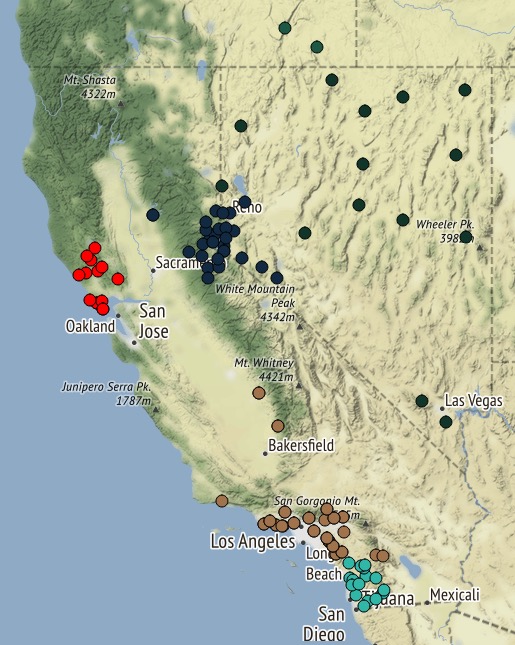
Several organizations are cooperating to install a network of cameras in the North Bay area of California that can detect wildfires soon after they start. At a perfect location with a 360° view the near infrared sensors can spot the signature of heat on up to 5,000 square miles, and up to 20,000 square miles at night. If a second camera detects the same heat source or smoke, the triangulation can tell dispatchers the exact location, enabling firefighters to get to the scene quickly.
A supercomputer attached to the network can then model the fire’s spread in 30 seconds to predict where it will be burning in the next several hours.
Recently one of the $2,600 cameras was installed on a hill that overlooks the path of the deadly Tubbs fire that burned into Santa Rosa in 2017.
Below is an excerpt from the Press Democrat:
With support from PG&E, the network plans to cover Sonoma, Mendocino, Napa, Lake and Marin counties with up to 40 such cameras by the end of March.
Thirteen of the pan-tilt-zoom cameras are already operating in the North Bay, with their images available to emergency dispatchers and to the public at alertwildfire.org.
The broader goal is to establish 200 new cameras statewide this year and Gov. Gavin Newsom’s budget includes funding for 100 more, said Graham Kent, director of the seismological laboratory at the University of Nevada, Reno, that started the program.
The Sonoma County Water Agency is also supporting the camera installation project.
The AlertWildfire group, a consortium of universities, including Scripps Institution of Oceanography at UC San Diego, Sonoma State University, and Oregon State University will build and maintain the system.
“These cameras will provide us with early fire detection and a level of situational awareness that is critical as we adapt to new wildfire behavior,” Sonoma County Water Agency director and Board of Supervisors Chair James Gore said.
The fire-camera system is built to the specifications of the University of Nevada, Reno’s Seismological Lab’s earthquake monitoring communications network based in their College of Science. It features private high-speed internet connectivity capable of transmitting seismic, environmental and climate data, in addition to the live-streaming high-definition video from the fire cameras.
“These fire camera networks realize their full functionality when a cluster of cameras are deployed in one area and to supply early detection, 911 confirmation, and situational awareness as well as triangulation to locate the fires,” Neal Driscoll, a professor at UC San Diego and co-leader of AlertWildfire, said. “Sonoma County Water Agency’s vision has made the North Bay region the next fire camera cluster.”

Dozens of cameras are already installed and working in Southern California, the Lake Tahoe area, and locations in Nevada.
